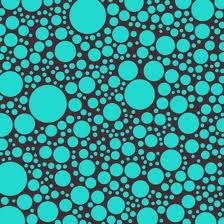
I posted earlier some thoughts of mathematician Bill Thurston, here and here. I have just encountered a reminiscence of Thurston and his specific contribution to mathematics by Philip Bowers of Florida State University. What is noteworthy is Bowers’ view of Thurston’s style of doing mathematics – a reversion to the particularist and concrete style of 19th century mathematics, something very much out of place in the abstract and generalist world of 20th century mathematics.
It is 1978 and I have just begun my graduate studies in mathematics. There is some excitement in the air over ideas of Bill Thurston that purport to offer a way to resolve the Poincare conjecture by using nineteenth century mathematics – specifically, the noneuclidean geometry of Lobachevski and Bolyai – to classify all 3-manifolds. These ideas finally appear in a set of notes from Princeton a couple of years later, and the notes are both fascinating and infuriating – theorems are left unstated and often unproved, chapters are missing never to be seen, the particular dominates – but the notes are bulging with beautiful and exciting ideas, often with but sketches of intricate arguments to support the landscape that Thurston sees as he surveys the topology of 3-manifolds. Thurston’s vision is a throwback to the previous century, having much in common with the highly geometric, highly particular landscape that inspired Felix Klein and Max Dehn. These geometers walked around and within Riemann surfaces, one of the hot topics of the day, knew them intimately, and understood them in their particularity, not from the rarified heights that captured the mathematical world in general, and topology in particular, in the period from the 1930’s until the 1970’s. The influence of Thurston’s Princeton notes on the development of topology over the next 30 years would be pervasive, not only in its mathematical content, but even more so in its vision of how to do mathematics. It gave a generation of topologists permission to get their collective hands dirty with the particular and to delve deeply into the study of specific structures on specific examples.
What has geometry to do with topology? Thurston reminded us what Klein had known, that the topology of manifolds is closely related to the geometric structures they support. Just as surfaces may be classified and categorized using the mundane geometry of triangles and lines, Thurston suggested that the in finitely richer, more intricate world of 3-manifolds could, just possibly, be classified using the natural [page-break] 3-dimensional geometries, which he classified and of which there are eight. And if he were right, the resolution of the most celebrated puzzle of topology – the Poincare Conjecture – would be but a corollary to this geometric classification.
The Thurston Geometrization Conjecture dominated the discipline of geometric topology over the next three decades. Even after its recent resolution by Hamilton and Perelman, its imprint remains embedded in the working methodology of topologists, who have geometrized not only the topology of manifolds, but the fundamental groups attached to these manifolds. Thus we have as legacy the young and very active field of geometric group theory that avers that the algebraic and combinatorial properties of groups are closely related to the geometries on which they act. This seems to be a candidate for the next organizing principle in topology.
The decade of the 1980’s was an especially exciting and fertile time for topology as the geometric influence seemed to permeate everything. In the early part of the decade, Jim Cannon, inspired by Thurston, took up a careful study of the combinatorial structure of fundamental groups of surfaces and 3-manifolds, principally cocompact Fuchsian and Kleinian groups, constructing by hand on huge pieces of paper the Cayley graphs of example after example. He has relayed to me that the graphs of the groups associated to hyperbolic manifolds began to construct themselves, in the sense that he gained an immediate understanding of the rest of the graph, after he had constructed a large enough neighborhood of the identity. There was something automatic that took over in the construction and, after a visit with Thurston at Princeton, automatic group theory emerged as a new idea that has found currency among topologists studying fundamental groups. In this work, Cannon anticipated the thin triangle condition as the sine qua non of negative curvature, itself the principal organizing feature of Thurston’s classification scheme. He studied negatively curved groups, rather than negatively curved manifolds, and showed that the resulting geometric structure on the Cayley graphs of such groups provides combinatorial tools that make the structure of the group amenable to computer computations. This was a marriage of group theory with both geometry and computer science, and had immediate ramifications in the topology of manifolds.” (Bowers 2009, pages 511-512).
References:
Philip Bowers [2009]:Introduction to circle packing: a review. Bulletin of the American Mathematical Society (New Series), 46 (3): 511–525.
Circle packing has surprising connections to the theory of complex functions. For introductions to the mathematics of circle packing, see:
Kenneth Stephenson [2003]: Circle packing: a mathematical tale. Notices of the American Mathematical Society, 50 (11): 1376-1388. Available here (PDF).
Kenneth Stephenson [2005]: Introduction to Circle Packing: The Theory of Discrete Analytic Functions. Cambridge, UK: Cambridge University Press.
The image shows a surface packed with circles of varying radii.
0 Responses to “The afterlife of 19th-century mathematics”